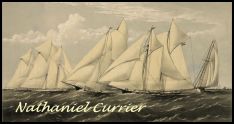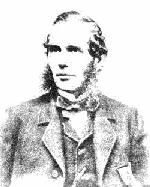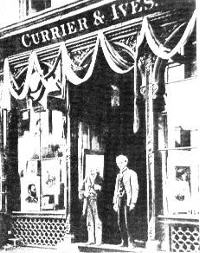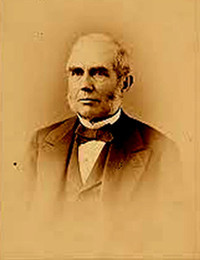Hits: 5713
Category: PAINTERS
 Nathaniel Currier was born in Roxbury, Massachusetts. His father died when he was aged twelve, and at the age of fifteen he was apprenticed in a Boston lithography shop. In 1833 at twenty years of age he moved to Philadelphia to do contract work for an engraver and printer.
Nathaniel Currier was born in Roxbury, Massachusetts. His father died when he was aged twelve, and at the age of fifteen he was apprenticed in a Boston lithography shop. In 1833 at twenty years of age he moved to Philadelphia to do contract work for an engraver and printer.
 In 1834, he entered a partnership with a New York print maker, and a year later ended the partnership and worked alone as "N. Currier, Lithographer". In 1835, he created a lithograph of a fire in the New York business district of which he sold thousands of copies. He produced other prints of disasters and local and national events and gained attention as a lithographer. In 1840, he produced a lithograph of a fire on the steam boat LEXINGTON in Long Island Sound which led to the offer of a weekly insert in the New York Sun. As result, Currier's firm began a move from job printing to independent publishing.
In 1834, he entered a partnership with a New York print maker, and a year later ended the partnership and worked alone as "N. Currier, Lithographer". In 1835, he created a lithograph of a fire in the New York business district of which he sold thousands of copies. He produced other prints of disasters and local and national events and gained attention as a lithographer. In 1840, he produced a lithograph of a fire on the steam boat LEXINGTON in Long Island Sound which led to the offer of a weekly insert in the New York Sun. As result, Currier's firm began a move from job printing to independent publishing.
 The firm of CURRIER & IVES was established in 1857 when Currier invited his company's bookkeeper and accountant, JAMES MERRITT IVES 1824- 1895 to become his partner. Ives became General Manager of the firm handling the finances. He also had flair for discerning popular interests and participated in the choice of images for publication. Some 7,000 lithographs were published in the firm’s 72 year history. Artists produced two to three new images every week for 64 years (1834-1895) and produced more than a million prints by hand-colored lithography. Many celebrated artists of the day were employed or their works used. Lithographs were produced on lithographic limestone printing plates on which the drawing was done by hand. These drawings were made by the artists who are described on the lithographs as "Delineators" or "Del." for short on the prints. Early lithographs were printed in black Prints were then hand-colored by a dozen or more women working in assembly line fashion, one colour per worker, who received $6 for every hundred prints.
The firm of CURRIER & IVES was established in 1857 when Currier invited his company's bookkeeper and accountant, JAMES MERRITT IVES 1824- 1895 to become his partner. Ives became General Manager of the firm handling the finances. He also had flair for discerning popular interests and participated in the choice of images for publication. Some 7,000 lithographs were published in the firm’s 72 year history. Artists produced two to three new images every week for 64 years (1834-1895) and produced more than a million prints by hand-colored lithography. Many celebrated artists of the day were employed or their works used. Lithographs were produced on lithographic limestone printing plates on which the drawing was done by hand. These drawings were made by the artists who are described on the lithographs as "Delineators" or "Del." for short on the prints. Early lithographs were printed in black Prints were then hand-colored by a dozen or more women working in assembly line fashion, one colour per worker, who received $6 for every hundred prints.
Currier died in 1888, Ives remained with the firm until his death in 1895. Both Currier's and Ives' sons entered the business which was liquidated in 1907. Public demand for lithographs was diminishing as photography and other techniques of printing were developed.

 Currier & Ives - The History of the Firm
Currier & Ives - The History of the Firm